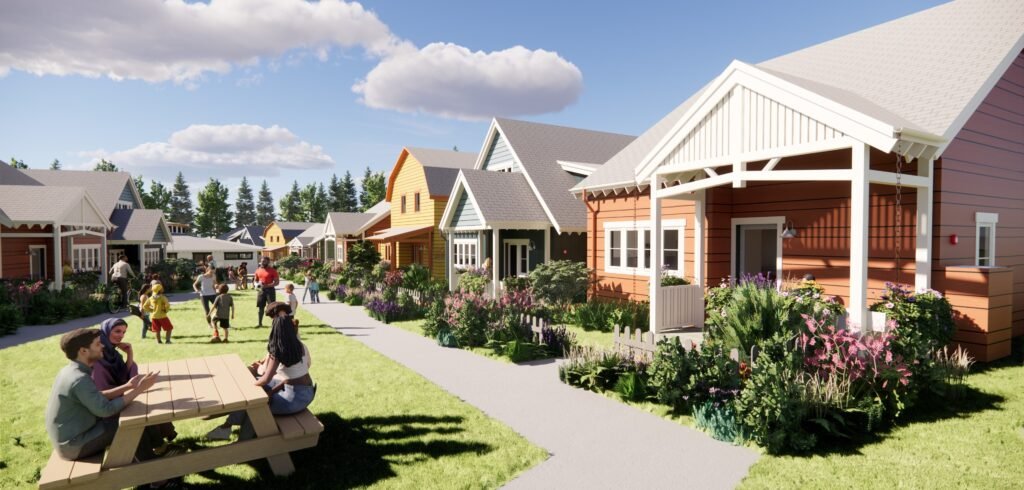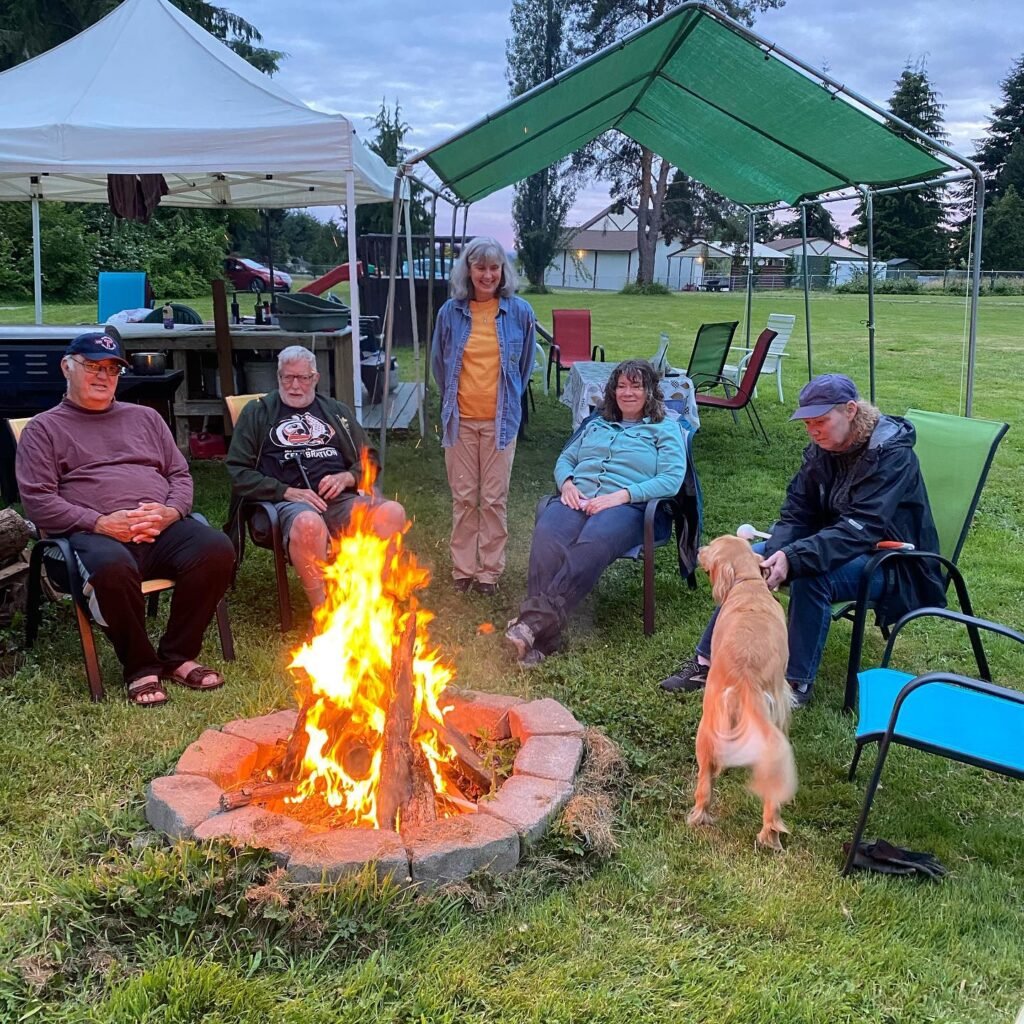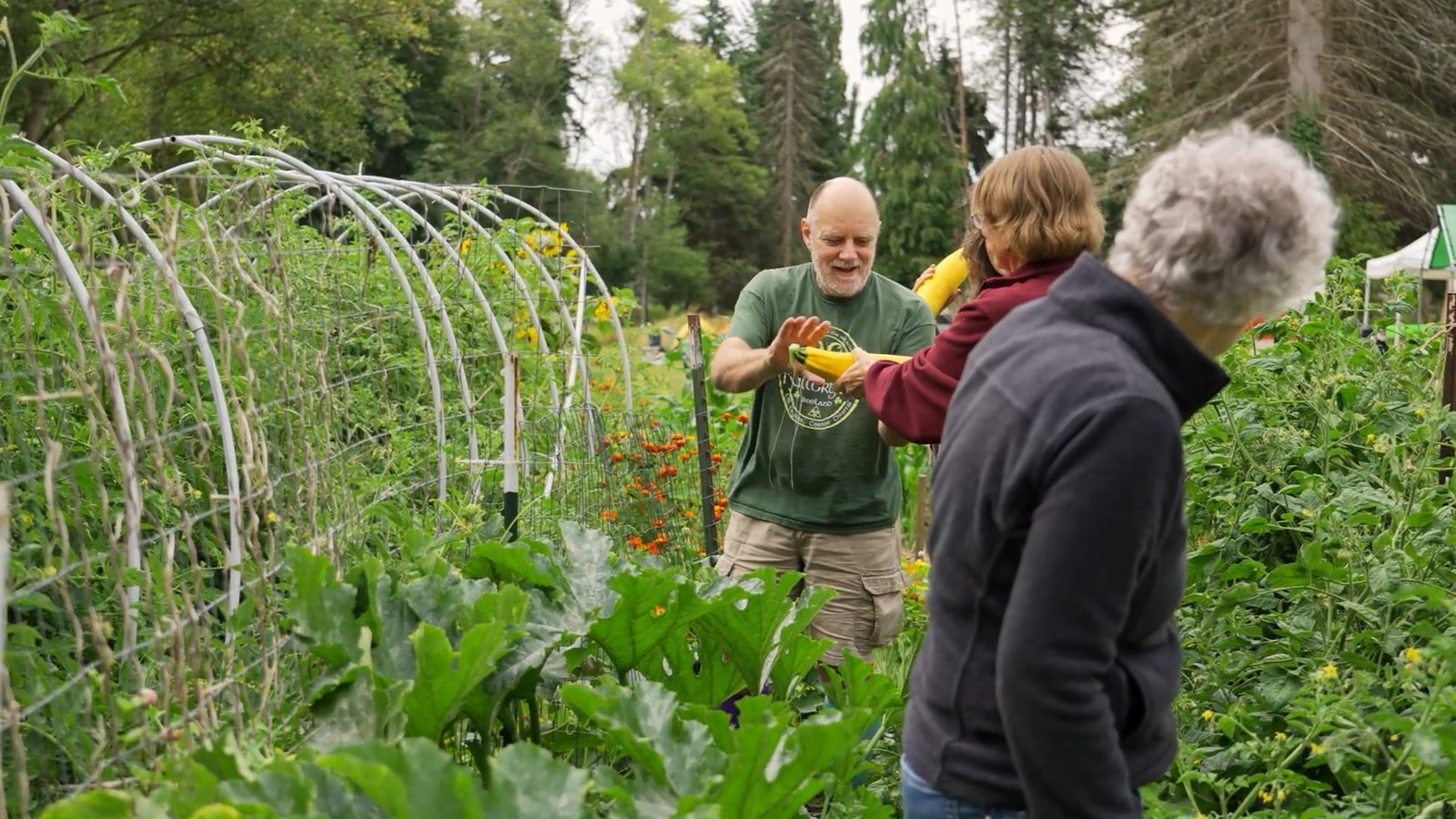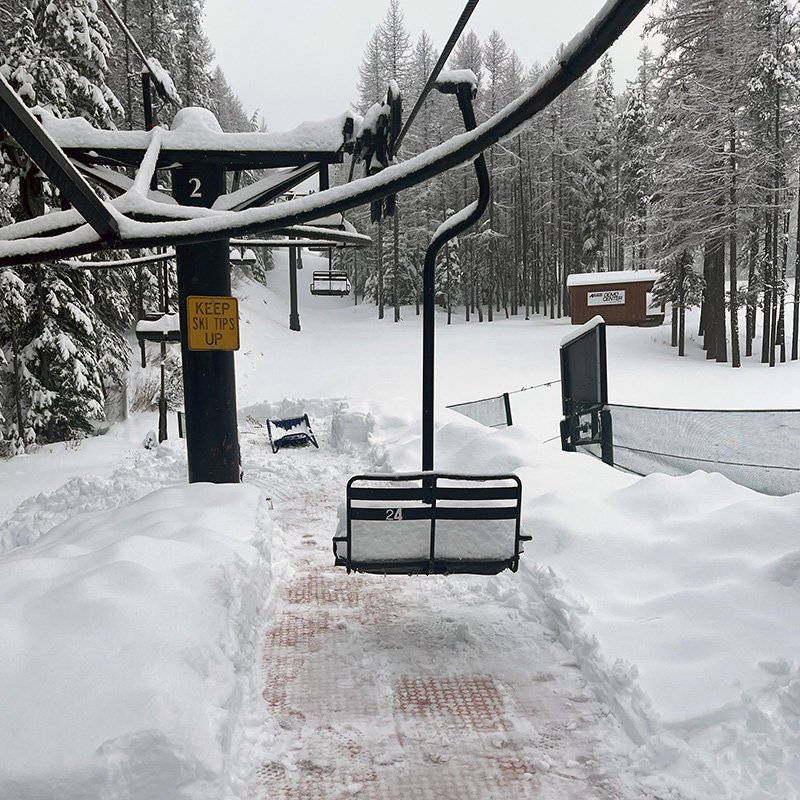“This article is paid content, published in partnership with Sunnyside Village Cohousing.”
Cohousing was created in Denmark in the late 1960s by families who wanted to balance the privacy of their own homes with the benefits of closer connections with neighbors. They envisioned neighborhoods where people supported each other, yet still had their own space, a middle ground between a commune and a suburban street of strangers. These neighborhoods typically consist of 20 to 40 privately owned homes clustered around common spaces such as gardens, play areas, or a common hall where residents can regularly dine and gather.
Most are designed intentionally from the ground up, with input from the future residents themselves. This participation shapes not only the physical space but also the collaborative culture of the community.
From Denmark, the concept spread across Europe and eventually to North America in the late 1980s and 1990s, where it has grown from a niche idea into a movement. Today, many Americans are seeking alternatives to the isolation of modern life. Rising housing costs, climate concerns, and the desire for stronger social networks are all fueling interest in cohousing. It offers something that many people crave today: safety, peace of mind, and a daily life enriched by both independence and interdependence.
Cohousing now in the United States
Fast forward to 2025, there are now roughly 305 growing and established cohousing communities in the United States. Residents often describe cohousing as “the best of both worlds.” They have the autonomy of their own home, but also the assurance that someone nearby will lend a tool, share a meal, or offer help in a time of need. For parents, that might mean extra sets of eyes on children playing outside. For seniors, it can mean the chance to age in place with the support of trusted neighbors. And for everyone, it often means a greater sense of belonging.
A New Cohousing Opportunity: Sunnyside Village in Marysville, WA

Among the new communities forming today, Sunnyside Village Cohousing in Marysville, Washington, stands out as a fresh take on the model. Located 40 minutes north of Seattle, Sunnyside is a growing village of 32 detached, storybook-style cottages spread across five acres. Each home is privately owned, but the community is designed around shared spaces: a Common House with seating for 64, a greenhouse, a workshop, walking trails, a community garden, an orchard, and even a protected woodland area.
What sets Sunnyside apart is its balance of rural and urban. Residents will enjoy peaceful cottage living by the Puget Sound, with kayaking, hiking, and birdwatching right at their doorstep, while still being close to the cultural life of Seattle. This dual access of quiet immersion in nature paired with the vibrancy of the city is something that most cohousing communities cannot offer.

Equally important is Sunnyside’s focus on values. The community has articulated a vision rooted in sustainability, inclusion, cooperation, and mutual respect. Members share meals made from their own gardens, look out for one another, and build daily life around cooperation and care. It’s a model that welcomes all ages and backgrounds, and one that reflects broader cultural shifts toward intentional, values-driven living.
Learn more about Sunnyside Village Cohousing and sign up for an informational Zoom session at www.sunnysidevillagecohousing.com.
The Future of Cohousing
From its Danish beginnings to its growing presence across the United States, cohousing has always been about reimagining what “home” can mean. In a time when many people feel disconnected, communities like Sunnyside Village are offering a path forward: private homes in a supportive neighborhood, designed for sustainability, mutual support, and connection to the land.





